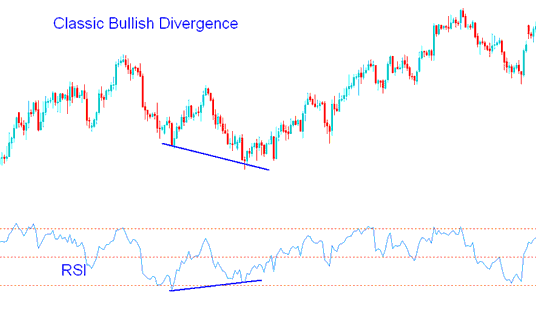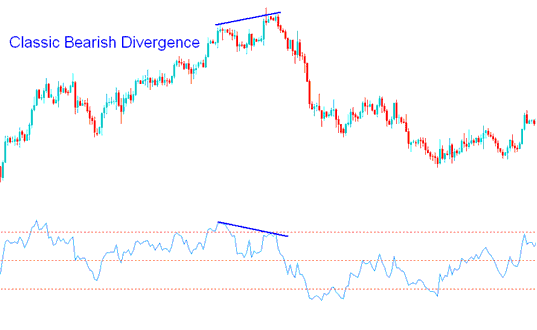RSI Indices Classic Bullish Divergence & Indices Trading Classic Bearish Divergence Indices Trading Setups
Indices classic divergence is used as a possible sign for a indices trend reversal. Classic stock indices trading divergence setup is used when looking for an area where stock indices price could reverse and start going in the opposite direction. For this reason indices classic divergence is used as a low risk entry method and also as an accurate way of exit out of a indices trade.
- Classic stock indices trading divergence is a low risk method to sell near the top or buy near the bottom of a stock indices market trend, this makes the risk on your stock indices trades are very small relative to the potential reward.
- Classic stock indices trading divergence is used to predict the optimum point at which to exit a indices trade
There are two types of RSI Classic stock indices divergence trading setups:
- Indices Trading Classic Bullish Divergence Setup
- Indices Classic Bearish Divergence Setup
Classic Stock Indices Bullish Divergence
Classic indices trading bullish divergence occurs when stock indices price is making lower lows (LL), but the oscillator trading indicator is making higher lows (HL).

Classic Stock Indices Bullish Divergence - RSI Indices Trading Strategies
Classic bullish stock indices trading divergence warns of a possible change in the stock indices trading market indices trend from down to up. This is because even though the stock indices price went lower the volume of sellers who pushed the stock indices price lower was less as illustrated by the RSI indicator. This indicates underlying weakness of the downward indices trend.
Classic Indices bearish divergence
Classic indices trading bearish divergence occurs when stock indices trading price is making a higher high (HH), but the oscillator technical indicator is lower high (LH).

Indices Trading Classic Bearish Divergence Indices Trading with RSI Indicator Indices Trading Strategies
Classic indices trading bearish divergence warns of a possible change in the indices trend from up to down. This is because even though the stock indices price went higher the volume of buyers that pushed the stock indices price higher was less as illustrated by the RSI indicator. This indicates underlying weakness of the upwards trend.
